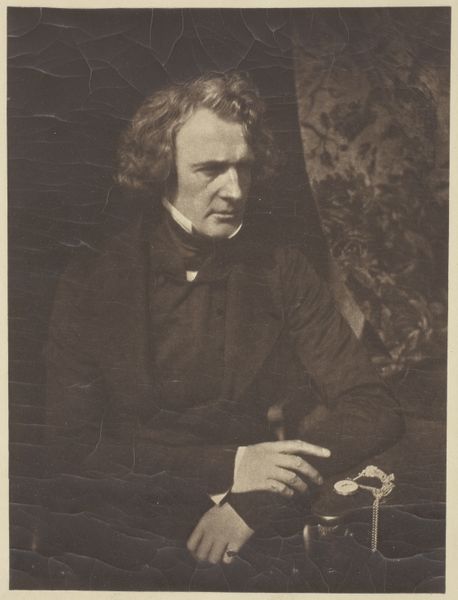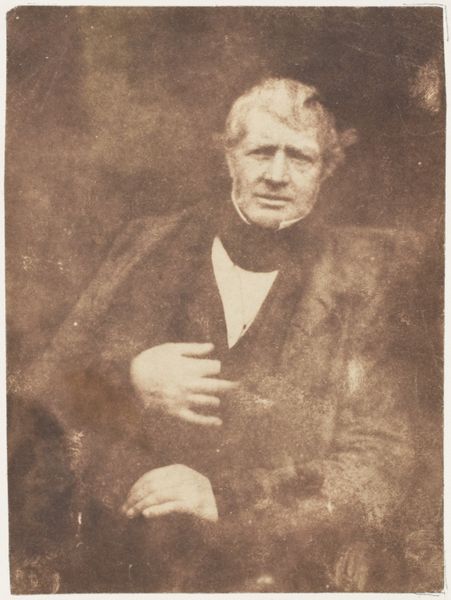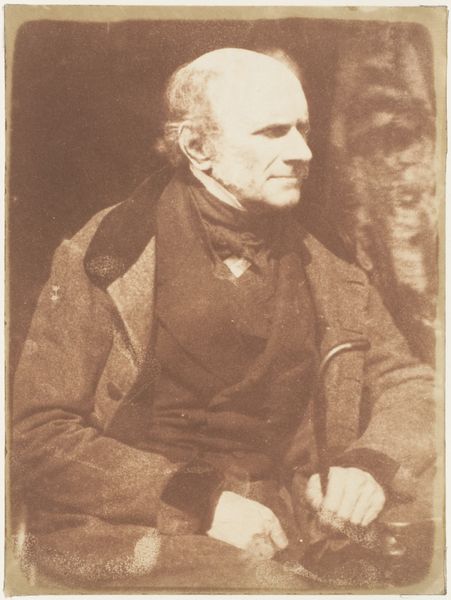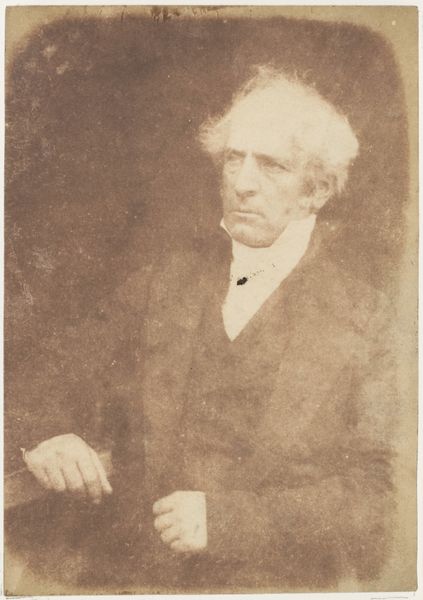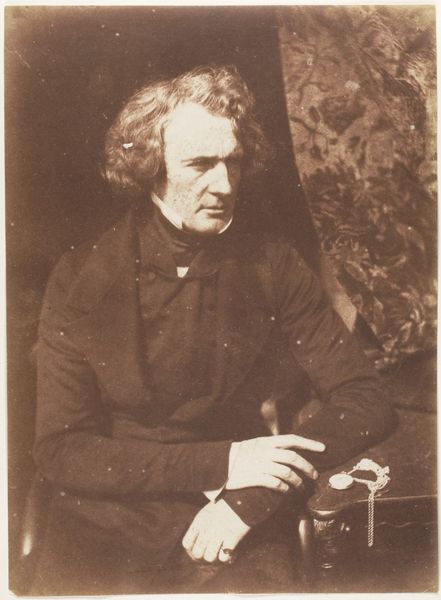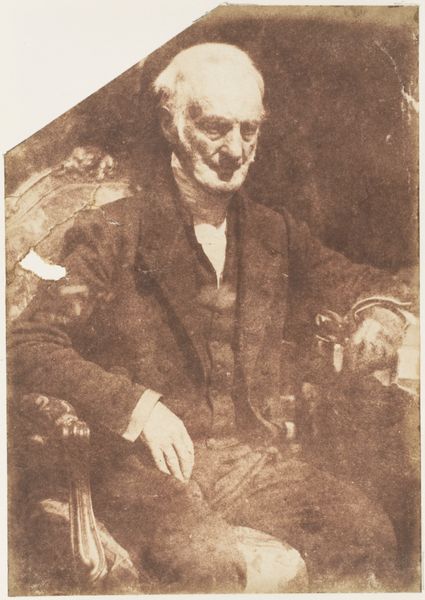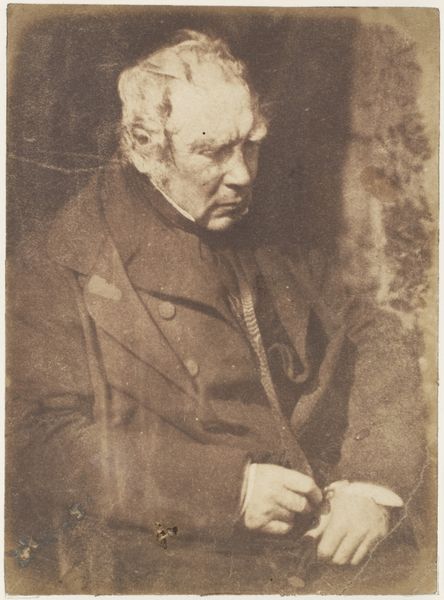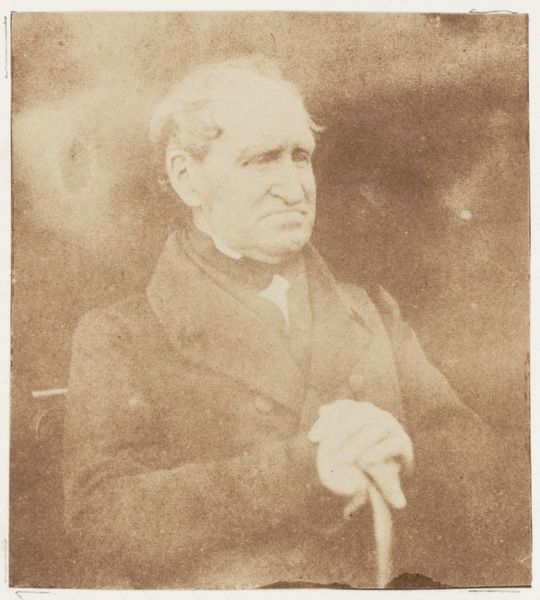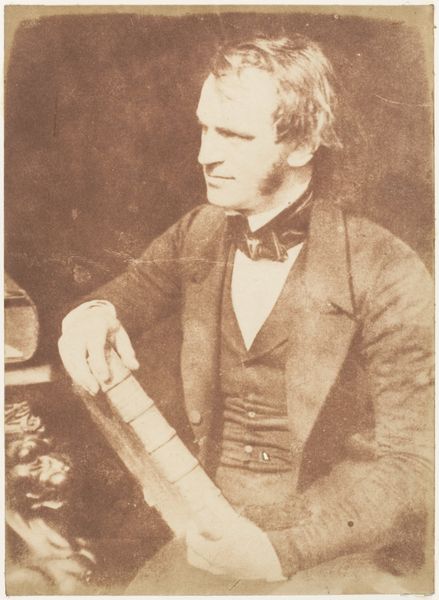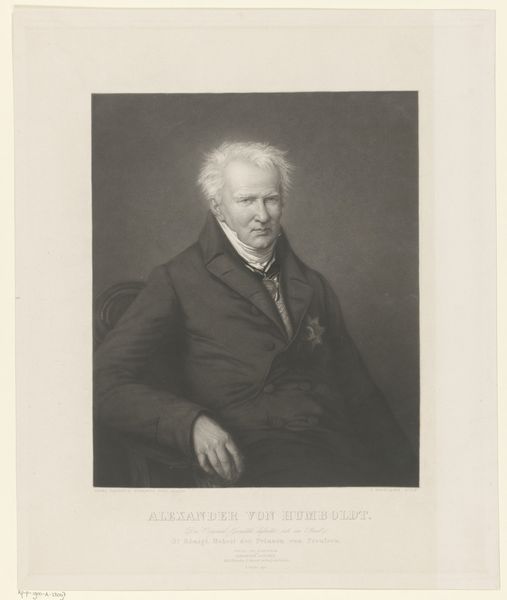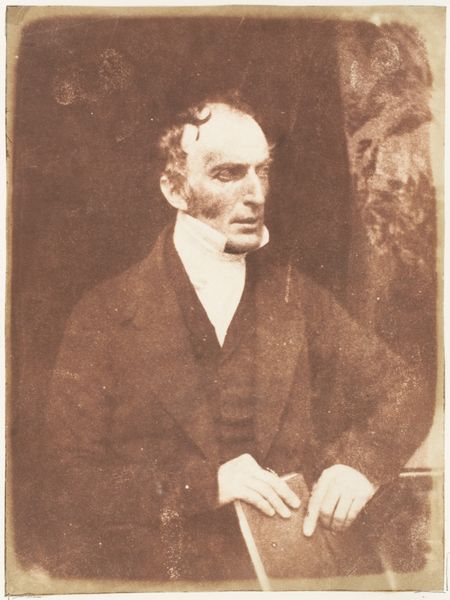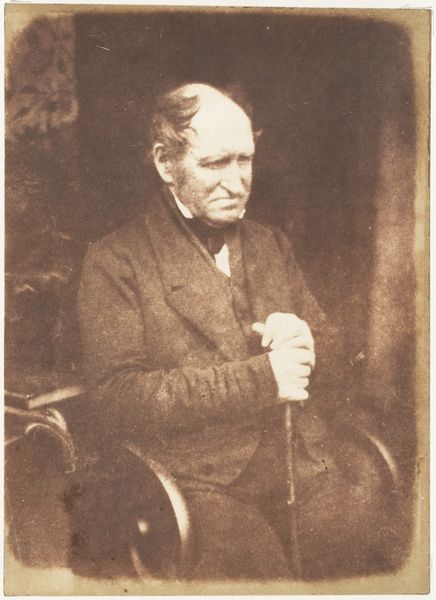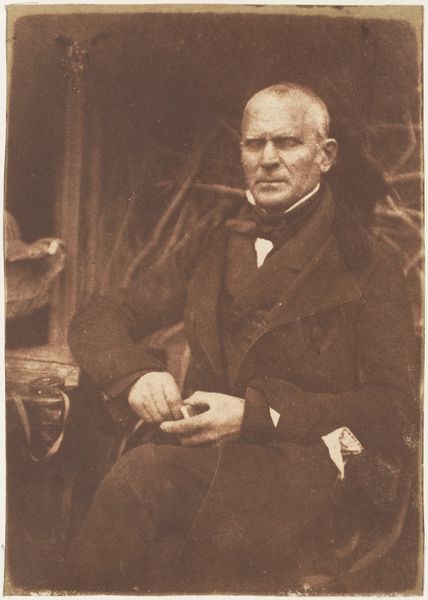
daguerreotype, paper, photography
#
portrait
#
16_19th-century
#
daguerreotype
#
paper
#
photography
#
historical photography
#
romanticism
#
single portrait
#
portrait character photography
#
portrait photography
#
profile
Copyright: Public Domain
Editor: We're looking at "Thomas Chalmers," a daguerreotype made by Hill and Adamson between 1843 and 1847. It’s currently held at the Metropolitan Museum of Art. The sepia tone gives it a very aged feel. What strikes you about this early photograph? Curator: For me, this image highlights the democratizing potential inherent in photography's emergence. The daguerreotype process, though complex, offered a relatively accessible means of portraiture compared to painted likenesses, particularly within emerging bourgeois society. It shifted artistic production and labor toward mechanical reproduction. Editor: That's an interesting perspective. How does the material process impact your understanding of Chalmers himself? Curator: Consider the chemical reactions involved in creating the image: silver iodide on a copper plate, developed with mercury vapor. These industrial processes bypass the need for extensive artistic skill in the traditional sense. The sitter, a theologian and social reformer, is implicated in this shift. Was he aware of the cultural shift in production that photography represented? How did access to such imagery change how social reformers were represented and regarded? Editor: I hadn't thought about that at all. So, rather than just seeing it as a portrait, you see it as part of this whole shift in production methods? Curator: Precisely. It challenges the conventional understanding of art as solely the product of individual genius, forcing us to confront the technological, economic, and social structures that make art possible, then and now. Editor: I’ll definitely look at photography differently after this. Thanks! Curator: And I will reflect more upon Chalmers’ place in that moment of transition!
Comments
No comments
Be the first to comment and join the conversation on the ultimate creative platform.
